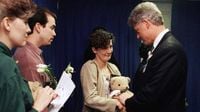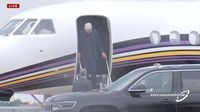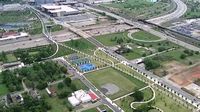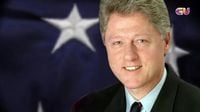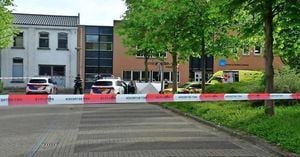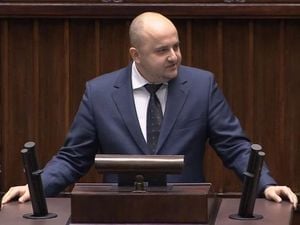Oklahoma City, April 19, 2025 — Former President Bill Clinton has returned to Oklahoma City to lead the nation in remembering the 30th anniversary of one of the darkest days in American history—the Oklahoma City bombing that claimed 168 lives on April 19, 1995. Clinton, who was serving as President at the time of the domestic terror attack, delivered the keynote address during Saturday morning’s official remembrance ceremony near the Oklahoma City National Memorial Museum. Clinton arrived at Will Rogers World Airport Friday afternoon, ahead of the highly emotional and symbolic event.
This year’s ceremony is particularly poignant, as it brings together a generation that remembers the bombing and one that was born long after it occurred. Due to inclement weather, the remembrance ceremony—initially planned to take place on the memorial grounds—has been relocated to a nearby church. The service began at 8:30 a.m. CST and included tributes, survivor testimonies, and moments of silence to honor those lost in the blast that destroyed the Alfred P. Murrah Federal Building three decades ago.
Clinton’s handling of the aftermath of the bombing remains one of the most defining moments of his presidency. His ability to offer solace to grieving families and unite the nation during a period of trauma earned widespread praise. Speaking ahead of today’s ceremony, Clinton reflected on the emotional weight of that day. “The nation’s eyes were there. The nation’s heart was broken there,” Clinton said in a video message from the Clinton Foundation. “I was privately praying that I would find the right words, the right tone, the right rhythm to somehow get into the mind and heart of as many Americans as possible.”
At age 78, the former president continues to emphasize the importance of confronting political extremism and teaching younger generations about the consequences of violence and hate. He has visited the Oklahoma City National Memorial multiple times over the years, helping to keep the memory of the victims alive and to promote education and peace.
Kari Watkins, President and CEO of the Oklahoma City National Memorial and Museum, said Clinton’s continued support underscores the memorial’s mission to educate future generations. “We are honored to have President Clinton back,” Watkins said. “We knew when we built this place we would someday reach a generation of people who weren’t born or who didn’t remember the story. And now, not just kids are coming, but teachers who are teaching those kids.”
The museum plays a vital role in educating visitors about the bombing, the rise of domestic terrorism, and the resilience of a city and a nation that came together in the face of unimaginable loss. As Americans pause to reflect on the bombing’s 30-year legacy, Clinton’s return to Oklahoma City serves as a powerful reminder of the importance of compassion, unity, and the enduring strength of communities in the wake of tragedy.
Thirty years after the deadliest homegrown terrorist attack in US history, Clinton is remembered for his empathetic response to the tragedy, which helped guide the nation through a period of intense mourning and shock. “The nation’s eyes were there. The nation’s heart was broken there,” Clinton reiterated in a recent video message. “I was privately praying that I would find the right words, the right tone, the right rhythm to somehow get into the mind and heart of as many Americans as possible.”
The ceremony, originally scheduled to be held outdoors at the memorial, was moved indoors to a nearby church due to expected inclement weather. It began at 8:30 a.m. Clinton has made several visits to the memorial over the years and has spoken on key anniversaries of the bombing, reflecting on its enduring emotional impact and the resilience shown by the Oklahoma City community.
Among the memorial's top missions is to help people understand the senselessness of political violence and teach a new generation about the impact of the bombing, said Kari Watkins, the memorial's president and CEO. “We knew when we built this place we would someday reach a generation of people who weren't born or who didn't remember the story,” Watkins noted. “I think now, not just kids are coming through more and more, but teachers who are teaching those kids.”
The bombing remains a turning point in American history, one that reshaped domestic security efforts and became a symbol of both loss and resilience. This year’s commemoration aims not only to honor those who died but also to reinforce a message of peace and remembrance for future generations.
Clinton's presence at the ceremony is a testament to his commitment to the ongoing healing process in Oklahoma City. He has often been regarded as a figure of compassion and strength during the aftermath of the bombing. His speeches over the years have resonated with many, reminding the nation of the need for unity in the face of adversity.
Reflecting on the significance of the day, Clinton emphasized the need for ongoing dialogue about the impact of violence and the importance of community. “This is not just about remembering the past,” he said. “It’s about shaping the future and making sure that we never forget the lessons learned from that terrible day.”
As the ceremony unfolded, survivors and families of the victims shared their stories, highlighting the personal tragedies that have shaped their lives since that fateful day. Each testimony served as a poignant reminder of the human cost of violence and the importance of fostering a culture of peace.
In a world still grappling with the effects of extremism and violence, Clinton’s return to Oklahoma City serves as a powerful call to action for all Americans. The memorial stands not only as a tribute to those lost but also as a beacon of hope and resilience, urging future generations to learn from the past and work towards a more peaceful future.

